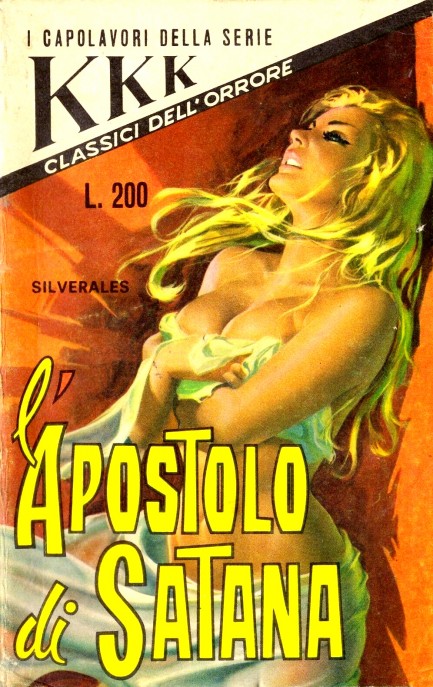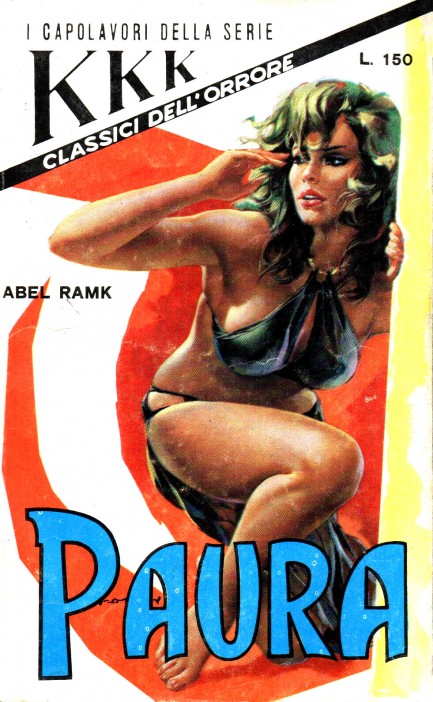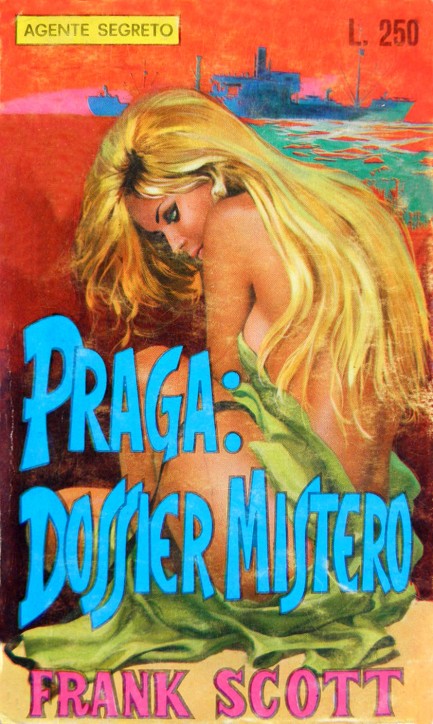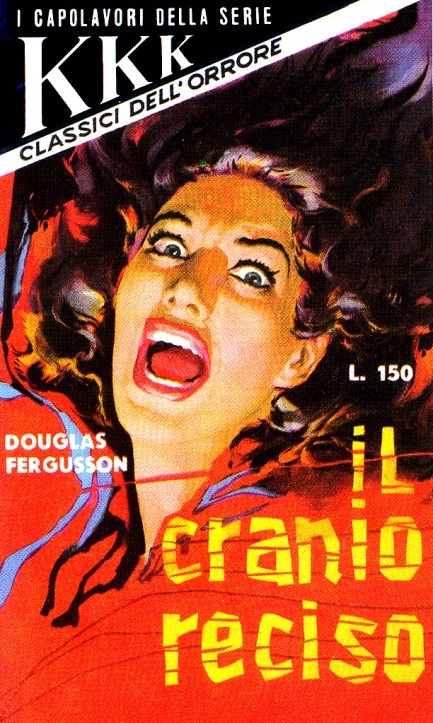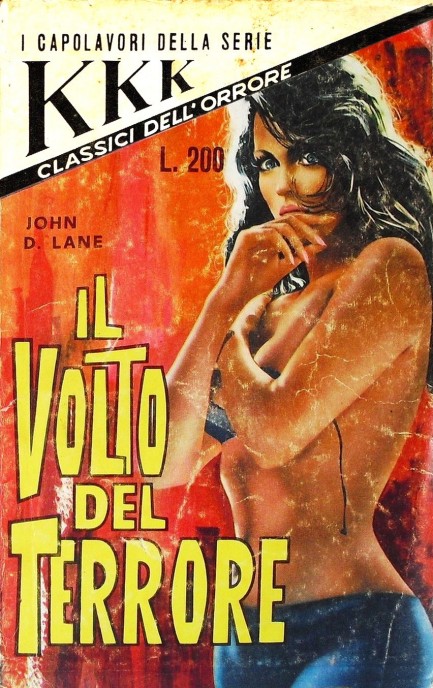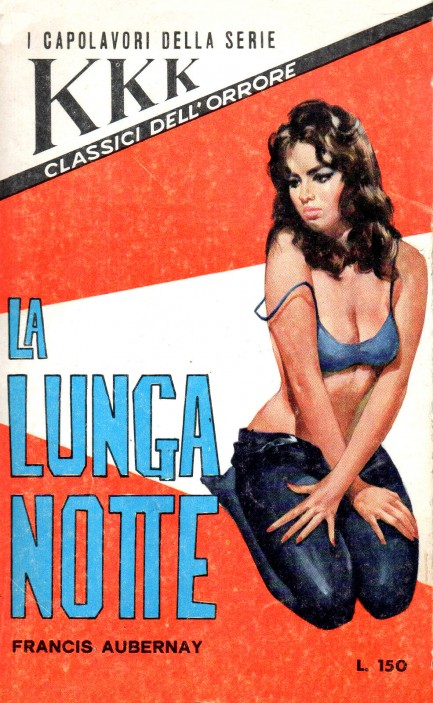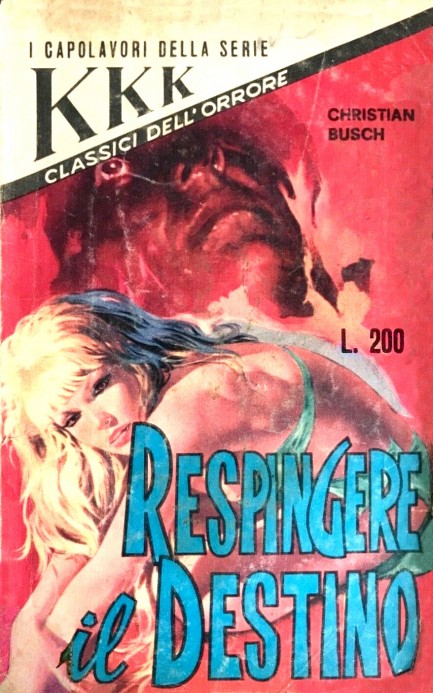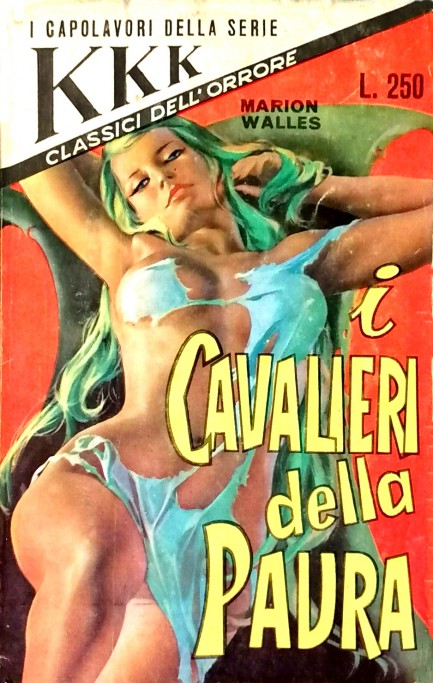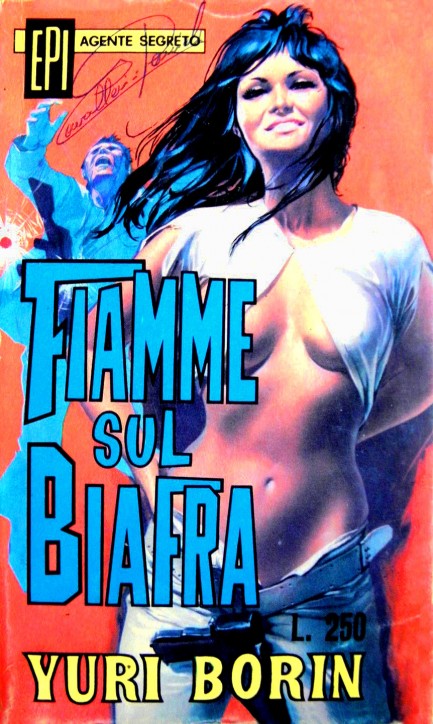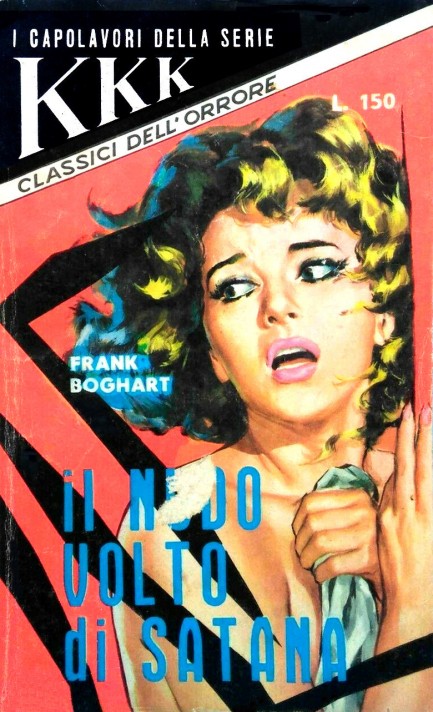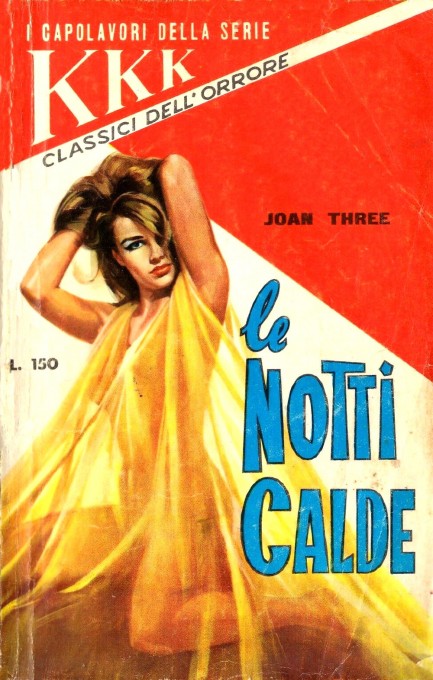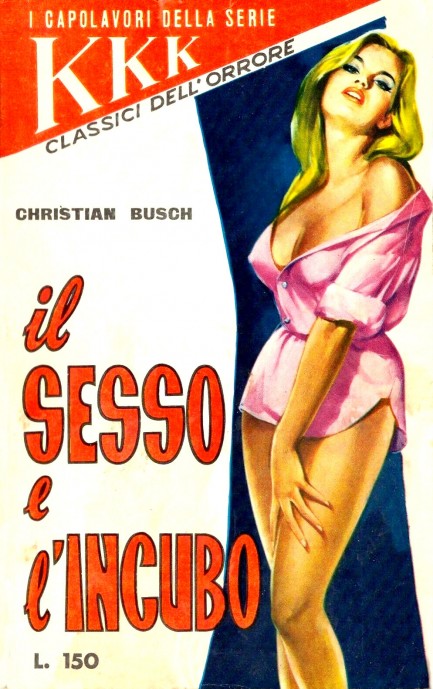 As long as he leaves his work at the office their relationship has a real chance to succeed. 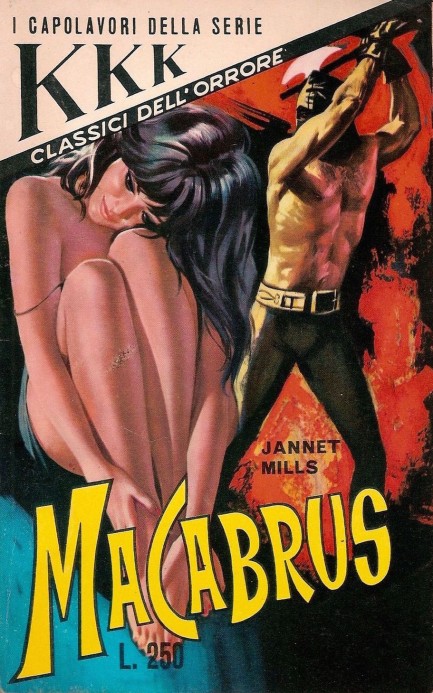
Above, a cover for Macabrus, by Jannet Mills, aka Laura Toscano, for Edizioni Periodici Italiani's series Classici dell'Orrore, copyright 1970. There are actually other great Italian cover artists, but we're Caroselli loyalists because he was the best. See plenty more from him by clicking his keywords below.
 Giovanni Simonelli was a virtual one-man industry in Italian cinema. 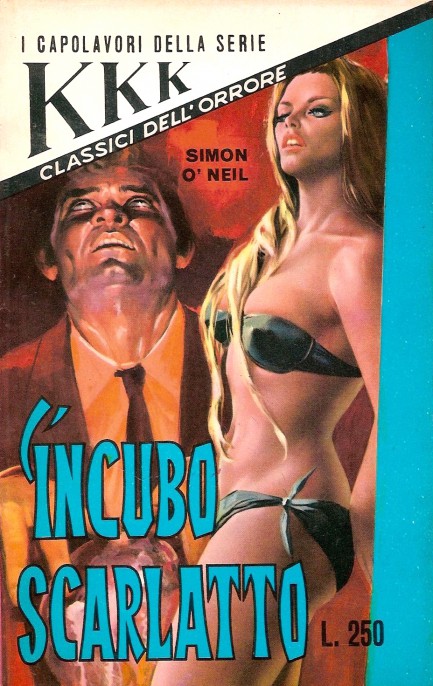
It’s been too long, so today we’re back to the incomprable Benedetto Caroselli, with a cover he painted for L’incubo scarlatto, aka “The Scarlet Nightmare,” by Simon O’Neil for EPI’s I Capolavori della Serie KKK Classici dell’Orrore, 1970. O’Neil would have been an Italian writer working under a pseudonym, and in this case it was Giovanni Simonelli, who wrote about seventy-five screenplays between 1958 and 1998. Some of those gems include L’uomo dalla pistola d’oro, released in English as Doc Hands of Steel, Dos pistolas gemelas, aka Sharp Shooting Twin Sisters, and Agente 3S3: Passaporto per l’inferno. L’incubo scarlatto is set in London and involves a woman who thinks she might be a vampire because men around her keep turning up violently killed. Considering one was her potential rapist and another was a sadistic drug lord, they both deserved it, but she needs to know the truth and pairs up with a psychiatrist to get to the bottom of the mystery. Simonelli did more than write macabre books and scripts. He also directed, composed music, and even acted in two movies, appearing in 1966’s Kommissar X - Jagd auf Unbekannt, aka Kiss Kiss, Kill Kill, under the name Sim O’Neill. Quite a career. We wouldn’t be surprised to run across his work again. Meantime, you can see plenty more art from Benedetto Caroselli here.
 He’s everything a man is, except he turns on only when you want him to. 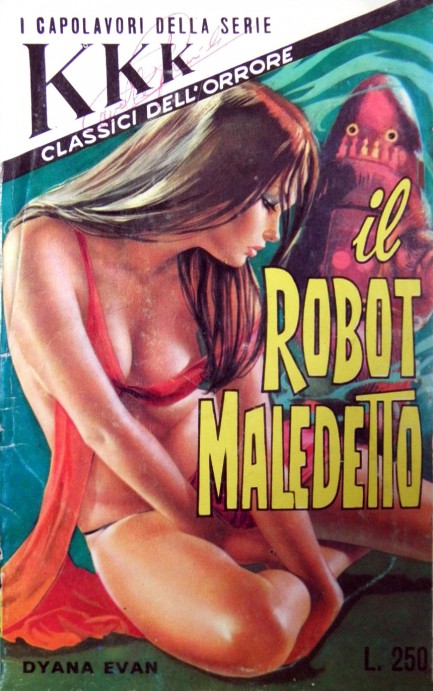
Above, Edizioni Periodici Italiani’s Il robot maledetto, 159 in the I Capolavori della Serie KKK Classici dell'Orrore, written by Dyana Evan, a psuedonym of Franco Marotta, 1971. The art featuring a lingerie clad woman and a phallic robot is more suggestive of romance or sleaze than horror, but it’s great work by Benedetto Caroselli, who you can see more of here.
 When the wolf is on the prowl. 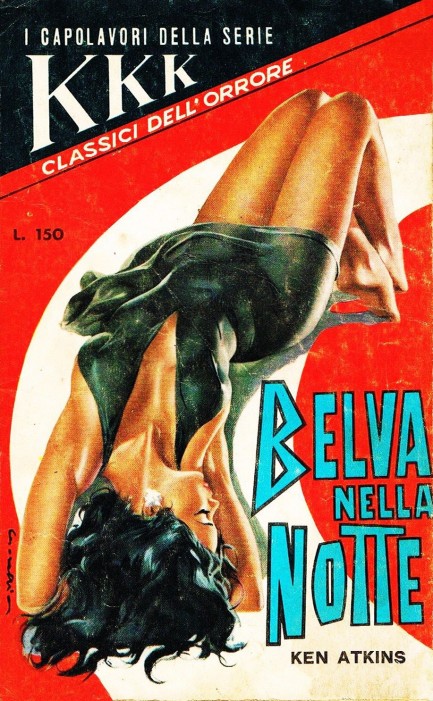
Above, the cover of Ken Atkins’ 1965 werewolf novel Belva nella notte, aka The Wolf in the Night. This was published for Edizioni Periodici Italiani’s I Capolavori della Serie KKK Classici dell’Orrore, and Atkins was a pseudonym owned by Domenico Dubbini, who also wrote as John Durbin, John Lane, Hassan Mills, Perry Rock, and other names. The art is by Benedetto Caroselli, who we knew nothing about until a couple of years ago, but who we’re now obsessed by, as evidenced by our posts here, here, and here. We have even more to share from Benedetto, so stay tuned.
|
 |

The headlines that mattered yesteryear.
1939—Holiday Records Strange Fruit
American blues and jazz singer Billie Holiday records "Strange Fruit", which is considered to be the first civil rights song. It began as a poem written by Abel Meeropol, which he later set to music and performed live with his wife Laura Duncan. The song became a Holiday standard immediately after she recorded it, and it remains one of the most highly regarded pieces of music in American history. 1927—Mae West Sentenced to Jail
American actress and playwright Mae West is sentenced to ten days in jail for obscenity for the content of her play Sex. The trial occurred even though the play had run for a year and had been seen by 325,000 people. However West's considerable popularity, already based on her risque image, only increased due to the controversy. 1971—Manson Sentenced to Death
In the U.S, cult leader Charles Manson is sentenced to death for inciting the murders of Sharon Tate and several other people. Three accomplices, who had actually done the killing, were also sentenced to death, but the state of California abolished capital punishment in 1972 and neither they nor Manson were ever actually executed. 1923—Yankee Stadium Opens
In New York City, Yankee Stadium, home of Major League Baseball's New York Yankees, opens with the Yankees beating their eternal rivals the Boston Red Sox 4 to 1. The stadium, which is nicknamed The House that Ruth Built, sees the Yankees become the most successful franchise in baseball history. It is eventually replaced by a new Yankee Stadium and closes in September 2008.
|

|
|

It's easy. We have an uploader that makes it a snap. Use it to submit your art, text, header, and subhead. Your post can be funny, serious, or anything in between, as long as it's vintage pulp. You'll get a byline and experience the fleeting pride of free authorship. We'll edit your post for typos, but the rest is up to you. Click here to give us your best shot.

|
|

